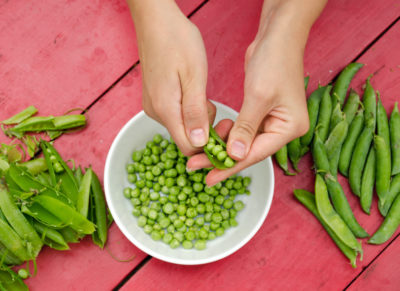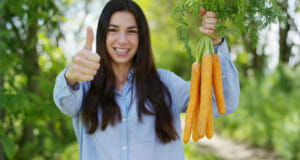Harvesting, saving and starting your own seed for your flower and vegetable garden(s) is a rewarding experience. It makes you feel accomplished, and believe it or not… it isn’t all that difficult.
Seed starting isn’t something you decide to do on a whim. It doesn’t take a lot of expensive equipment, but it does take a bit of planning and preparation; the first thing being seed harvest.
The first thing you need to know when it comes to harvesting seed is whether or not the seed comes from a hybrid or non-hybrid (sometimes called heirloom) plant. If the seed comes from a hybrid plant, it is sterile and will not reproduce. The seeds are, for all practical purposes, useless. If the seed comes from a non-hybrid or heirloom plant, however, then, harvest away, because you’ll have seeds you can save from year to year—never needing to buy seeds again.
When harvesting or gathering seeds, you need to keep the following in mind….
- Know where the seed is and what it looks like. Novice seed harvesters might think that all seeds look alike or are found in the same part of the plant. Once you know what seeds you want to harvest, do a bit of research to know what the particular plant’s seed looks like and where it is found.
- Make sure the seeds are ready to harvest. This is most generally when the plant has surpassed its peak and is dying off. For instance, once a portulaca flower has shriveled and died, the base of the plant, which contains hundreds of minute seeds, must dry completely before the seeds are harvestable. Heirloom petunias are the same way. Other flowers, such as zinnias and marigolds can be picked, dried, and then harvested of their seeds.
- Dry seeds thoroughly. Harvesting seeds from non-hybrid varieties of tomatoes, peppers, squash, etc. will be done when preparing the veggies for eating. After collecting the seeds, wash them free of debris, lay them out on paper toweling in a warm, dry place (a sunny window works great) to dry completely. You can turn them to ensure equal drying time. This doesn’t take more than 2 or 3 days.
- Once seeds are completely and utterly dry (this cannot be stressed enough), you can store the seeds in paper bags. Small brown lunch sacks work well. If the seeds are very small, you can tape the folds of the sack down so the seeds don’t get lost inside. Keep the seeds in a cool, dry place for the winter.
New Survival Seed Bank™ Lets You Plant A Full Acre Crisis Garden!
When spring is in the not-so-distant future, it will be time to start your seed. It is important to remember that not all seed should be started at the same time. The reason is that not all seed requires the same amount of time to germinate (sprout). For instance, zinnia seed will germinate in 3 or 4 days in normal growing conditions, while petunia seed wills take a week or two and geranium seeds will take approximately 8 weeks. NOTE: Geraniums are best started in early winter for spring transplanting.
To start your seed you will need the following:
- Quality potting soil-make sure it is POTTING soil-not garden soil.
- A warm, sunny location and/or proper lighting for growing
- Containers (usually called cells)
To have optimal success in starting your seeds, you need to use soil that is warmed by the sun and that has been pre-moistened with water that is not too cold. By pre-moistening, you will eliminate the danger of washing your seed away by watering after sowing.
Next, you need to plant your seeds at the proper depth. Most seeds need very little soil covering them. In fact most flower seeds do best when patted firmly into the topmost layer of soil (barely covering them). Vegetable seeds (most of them) need a bit more coverage. A good rule of thumb is twice as deep as the seed is tall.
Once the seeds are planted, you must be diligent in providing them the proper amount of heat, light, and moisture. Again… some seeds require more moisture than others. But as a whole, lightly moist soil is all that is needed. Soaking the soil only raises the chances of the seed rotting before having the chance to germinate. As for light and heat…these are the most crucial in the beginning stages of germination.
Heat can be obtained from a number of sources. These include growing lights, heat pads specifically made for seed starting or something that has proven to work fairly well—tubular Christmas lights. NOTE: Do not use tubular lights if your plant cells are made of plastic or paper products if there is any danger of direct contact. As for lighting, hours of light will increase as the seedling emerges from the ground. The light is essential for the leaves to make food to grow (photosynthesis).
When the seedlings have 2 to 3 sets of leaves, all danger of frost is past, and the ground temperature is warm enough to sustain the plant, you may transplant your seedling to the ground.
When transplanting, it is important to place the plant into the ground without disturbing the delicate roots of the seedling. Do this by gently releasing the soil pack from the cell and placing the soil and plant in the ground. If you don’t want to worry about harming your plant, use biodegradable plant cells. They are available in lawn and garden departments and stores. You can also make your own by using small paper cups that have a wax coating, cups made from old newspaper that you sit in muffin tins or paper (cardboard) citrus trays (similar to egg cartons).
Once the seedlings have been transplanted, it is important to protect the tender plants from the cold, too much moisture, strong winds and too much heat.
Let’s recap what you’ve learned…
- Only non-hybrid seed can be harvested and sown
- Seed should be harvested once the flower or vegetable have passed their prime
- Seeds should be thoroughly dried before storing and stored in cool dry paper bags
- Seed should be started in early to late winter for spring planting
- Seeds need warmth, moisture and light to germinate and grow
- Not all seeds are alike and have the same needs
- Seeds should be transplanted carefully so as not to disturb their tender roots
- Young plants need plenty of TLC to ensure they reach their full potential…to give you seed to harvest next year
 Off The Grid News Better Ideas For Off The Grid Living
Off The Grid News Better Ideas For Off The Grid Living





